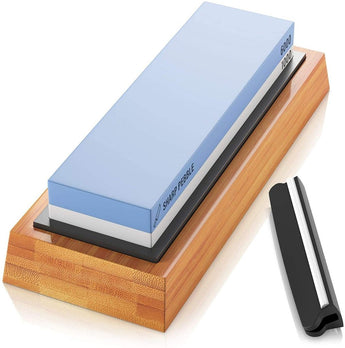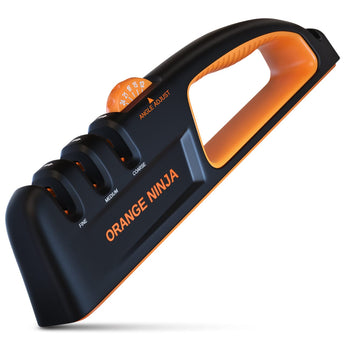
As promised, we’re back with the second part to share the super hacks that some of the world’s most renowned knife experts employ to keep their knives in top-notch condition, ready to whip out at a moment’s notice.
- Honing Is Equally Important As Sharpening
There could be 2 main reasons why a knife doesn’t cut the way it should. The most obvious reason is a dull blade. Secondly, if you happen to use your knife quite a bit on a hard surface, it’s quite likely the knife’s cutting edge can misalign i.e. it can roll over.
The best way to determine this is by feeling the side of the blade from tip to base with your thumb. Honing is the process that’s used to realign the edge. You can perform this on a honing blade that looks like a small sword with a rounded blade.
- For Best Results Use More Than One Whetstones
Whetstones come in varying coarseness. The coarseness is measured in “grit”. The lower the grit value the higher the whetstone coarseness. It’s preferable that you get yourself a whetstone knife sharpener with low, medium and high grit. If you your blade is quite dull then a lower grit stone is preferable. For routine sharpening, a medium grit would do and for finishing and polishing purposes a higher grit is ideal. If your budget is limited then it’s best to get a medium grit stone with 1000 grit value.
- Apply The Correct Pressure When Sharpening
While sharpening, beginners often apply a lot less pressure on the knife than required. It’s best to use about 4 pounds for routine sharpening and about 8 pounds of pressure if your knife is quite dull. You can use the kitchen scale to first determine the correct pressure and then apply the same when sharpening.
- Pay Attention To The Sharpening Angle
The angle at which you sharpen your knife will depend on how the knife is usually used. If you use your knife mainly for heavy duty cutting such as chopping large chunks of meat, then use an angle of 20 degrees to condition the blade for a heavy workload. Whereas if the use is more delicate such as finely slicing vegetables then an angle between 10 and 15 degrees is appropriate.
- Correct Cutting Technique Matters
Many of us after chopping our ingredients use the knife to sweep the ingredients into the pan. This sweeping or brushing motion across the cutting board can kill the sharpness as it rolls the edge and misaligns it, which means your knife will require honing a lot more frequently.
- Sharpening Can Prolong The Life Of Even The Cheapest Knives
Just because you bought a knife for $25 doesn’t mean it can’t last for a decent period of time. You’d be surprised at how proper sharpening can significantly improve the lifespan of even the cheapest of knives, truly stretching each penny of yours to a dollar.
We’d love to hear from you! Drop us a PM on our Facebook or Instagram.


